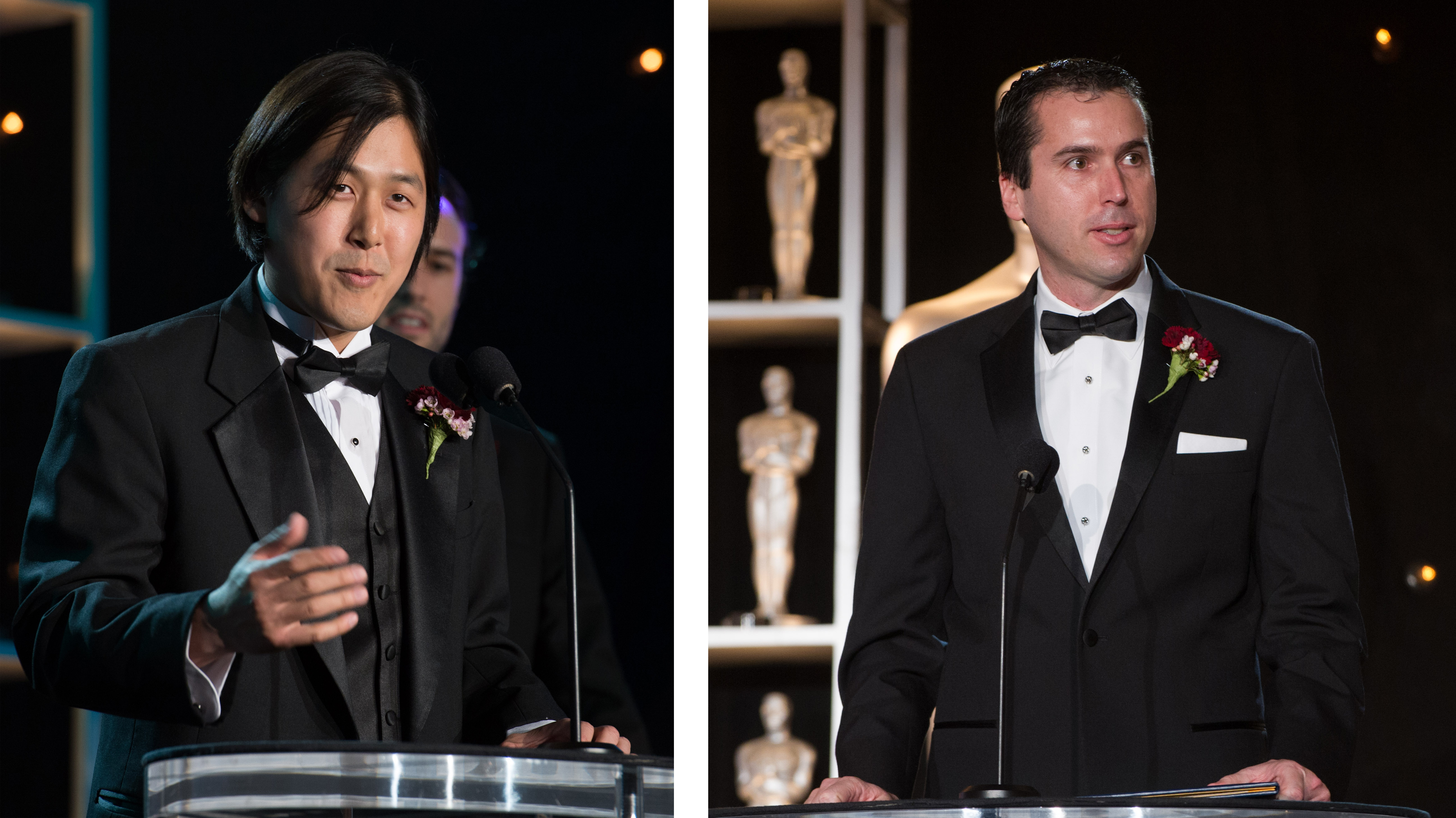Two Alumni Receive Academy Awards in Special Effects

Theodore Kim (left) and Lawrence Kesteloot (right) giving their acceptance speeches at the Academy Awards. Photos courtesy of the Academy of Motion Pictures Arts and Sciences and Greg Harbaugh & Darren Decker/ ©A.M.P.A.S.
Not many computer scientists ever expect to win an Oscar, but this year two UNC alumni received Academy Awards, the film industry’s highest honor, for technical achievement in special effects. Theodore Kim (Ph.D 2006) and Lawrence Kesteloot (M.S. 1995) were both part of teams that were recognized on February 9, in Beverly Hills, for their innovative work that has affected the film industry.
Kim and his fellow team members were recognized for their software algorithm known as Wavelet Turbulence, which expands on a former Oscar winning algorithm to generate realistic swirling smoke and fiery explosions on a larger scale and in a way that is easier to create and control. Their work has already been incorporated into more than two dozen movies, including “Avatar,” “Sherlock Holmes,” “Transformers: Revenge of the Fallen,” “Hugo,” as well as many others. Kim began working on the project in 2007 during his post doctoral studies. “We applied and thought we had a shot, but at the same time we couldn’t believe when we heard we won,” Kim said. He is currently an assistant professor of media arts and technology at the University of California, Santa Barbara.
The other Oscar winning alumnus, Lawrence Kesteloot, worked with two others to create their integral Light system for computer graphics lighting at DreamWorks. Even though the original Light was created over 15 years ago, it is still continuously used because of its emphasis on interactive responsiveness, final–quality interactive render preview, and scalable architecture among other things. Kesteloot worked on the program very soon after leaving UNC. He described the commitment required by the project, saying, “Working on this program is one of the greatest times of productivity in my career. It was hard work, but I look back on it with fond memories.” He is currently working as an engineer at Tasty Labs in the San Francisco Bay Area.
